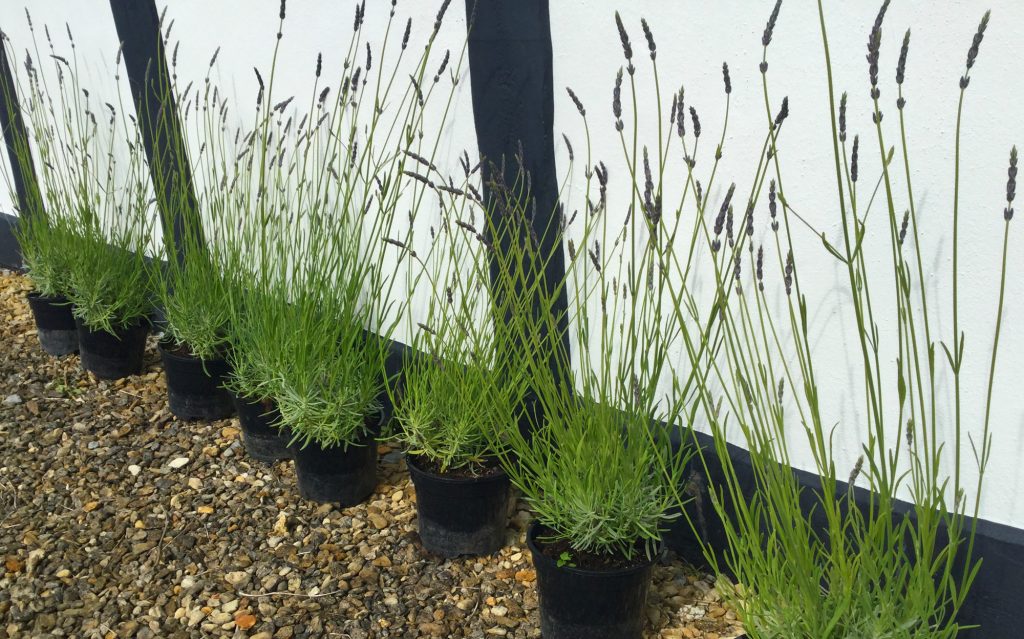Lavender is another one of those plants that, if not cared for properly, can look straggly, even unattractive. And like roses, is a plant which I haven’t been that successful with in the past. Here in Shropshire there are plenty of places in full sun, and although the clay soil shouldn’t suit lavender, we inherited two rows of a short lavender either side of the path under the ash tree – where despite the shade they appeared to be thriving. In the main garden a wide gravel path runs along the side of the house over which the grass and clover has crept making it very untidy. I decided that a lavender hedge to create a distinct boundary would help with our aim of changing the area of grass into a garden proper.

Hopefully, planting the lavender in the gravel path rather than the clay, would give it good drainage. So off to our local nursery and back with a dozen English lavenders – Lavandula x intermedia ‘Grosso’, described as vigorous with a strong scent – ideal for a hedge beside a path. To create a neat edge, I used old bricks. A retaining wall behind the house had partially collapsed long before we arrived (fortunately the bank it was retaining is held in place by the roots of numerous grass and weeds – the metamorphosis of this bank into something more attractive will hopefully be the subject of a future garden project and blog post, but not for some time yet). The bricks from this wall had been left piled up and although I thought they were unattractive as a wall they looked good as a lawn and path edging. I had my plan, now for its execution.

Well this proved extremely hard work. And it would have been, even without a heatwave. First the grass and clover proved tenacious and took some removing, especially as I wanted to eradicate as many roots as possible – I didn’t want to be forever digging out grass from amongst the lavender. Then I had to excavate down through the gravel to be able to set the bricks level with the grass and gravel path and further to create a deep planting hole for each lavender. This is where it got seriously difficult, as the gravel was just the top layer over a much more solid seam composed of the garden’s characteristic grey stones embedded into the clay. It was painstaking work to dislodge these stones – sometimes I had to resort to hammer and chisel. I did one plant at a time, often only managing one lavender in a whole afternoon. Creating this hedge was going to take some time.

As seems so often to be the case, I was faced with two opposing concerns: would the dusty, stony planting hole offer too little in the way of nutrients and moisture for the plants, or would it act as a sump over the impenetrable clay, drowning the lavender? Too dry or too wet? This was becoming an all too frequent question in our clay garden. To give the lavender a fighting chance, I mixed clay from elsewhere in the garden with small stones sieved from the gravel and some compost to make a planting mixture with which I surrounded the root ball of each plant. I watered each one in and surrounded them with a thick layer of gravel topped by a layer of the excavated grey stones to create a contrast with the gravel path. Job done.

Once my back has stopped aching I will hopefully be able to fully appreciate my embryonic hedge of lavender. My fingers are crossed that the lavenders will establish themselves and that they will be robust enough for our conditions. Plus of course I must take great care deadheading and pruning. Already the brick edging and stone covered bed has made a big difference to the look of the path and, along with the burgeoning flowerbed of the Secluded Garden, this now truly feels like a garden not just a field of grass. Good progress.

